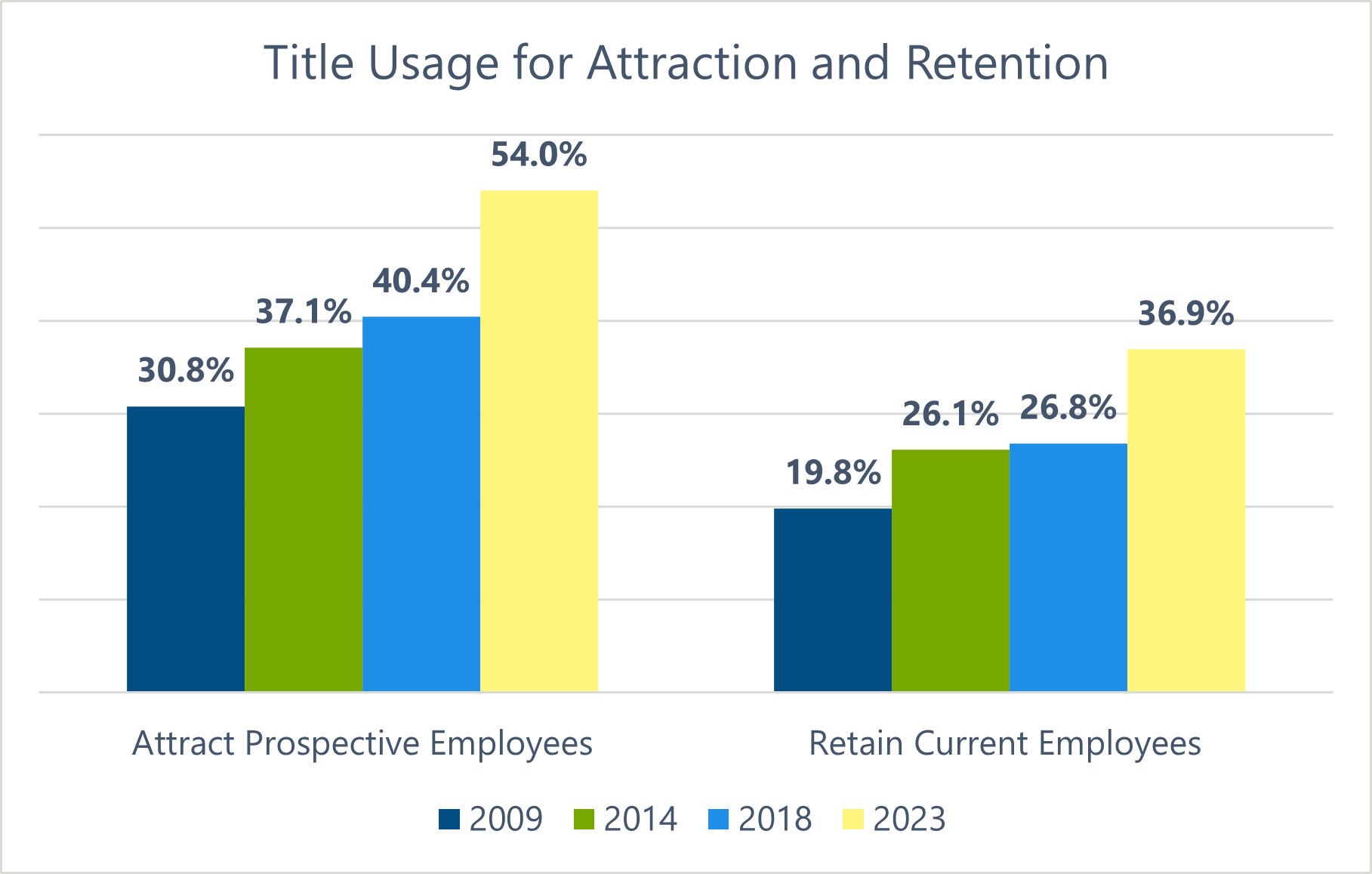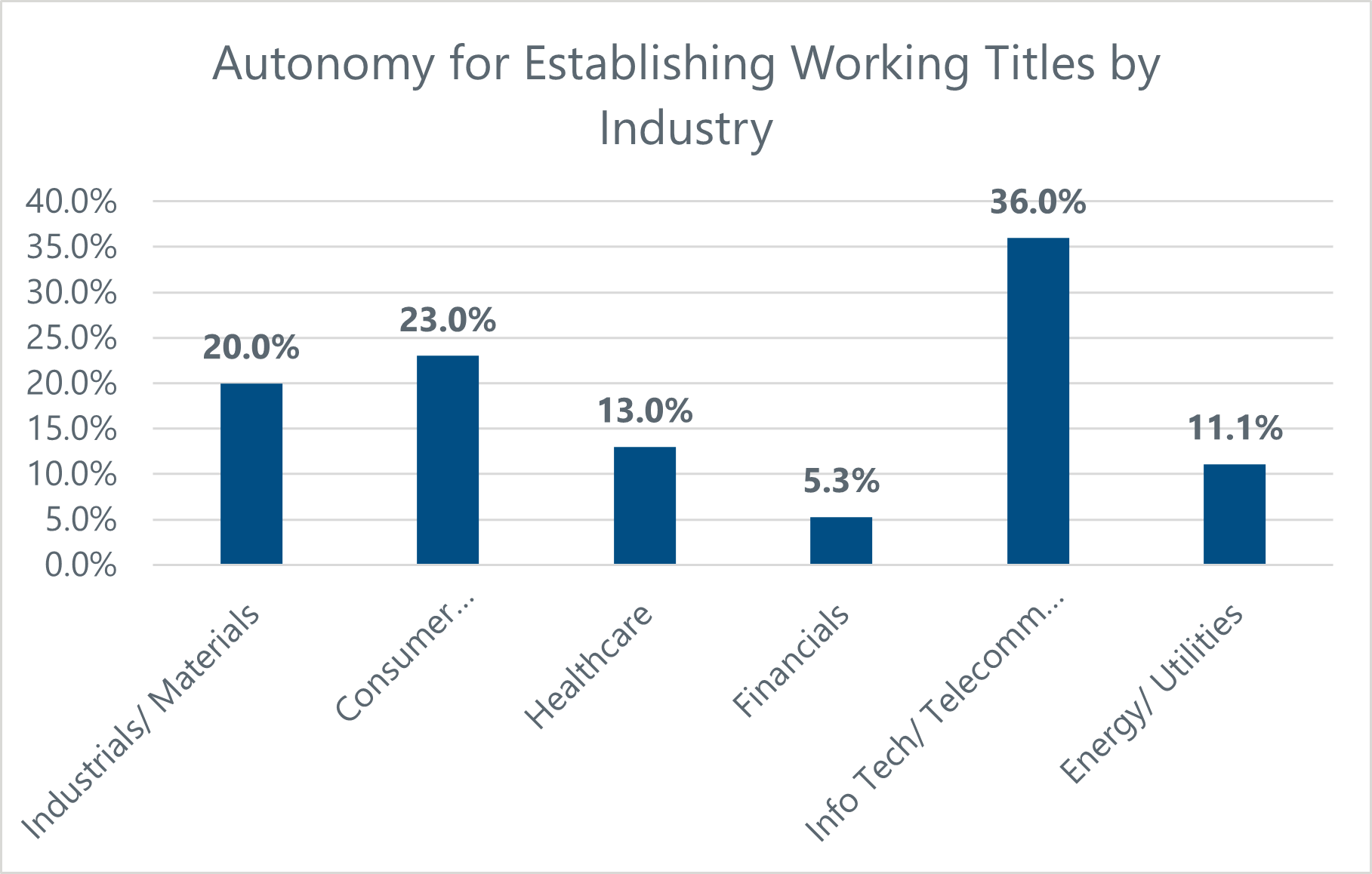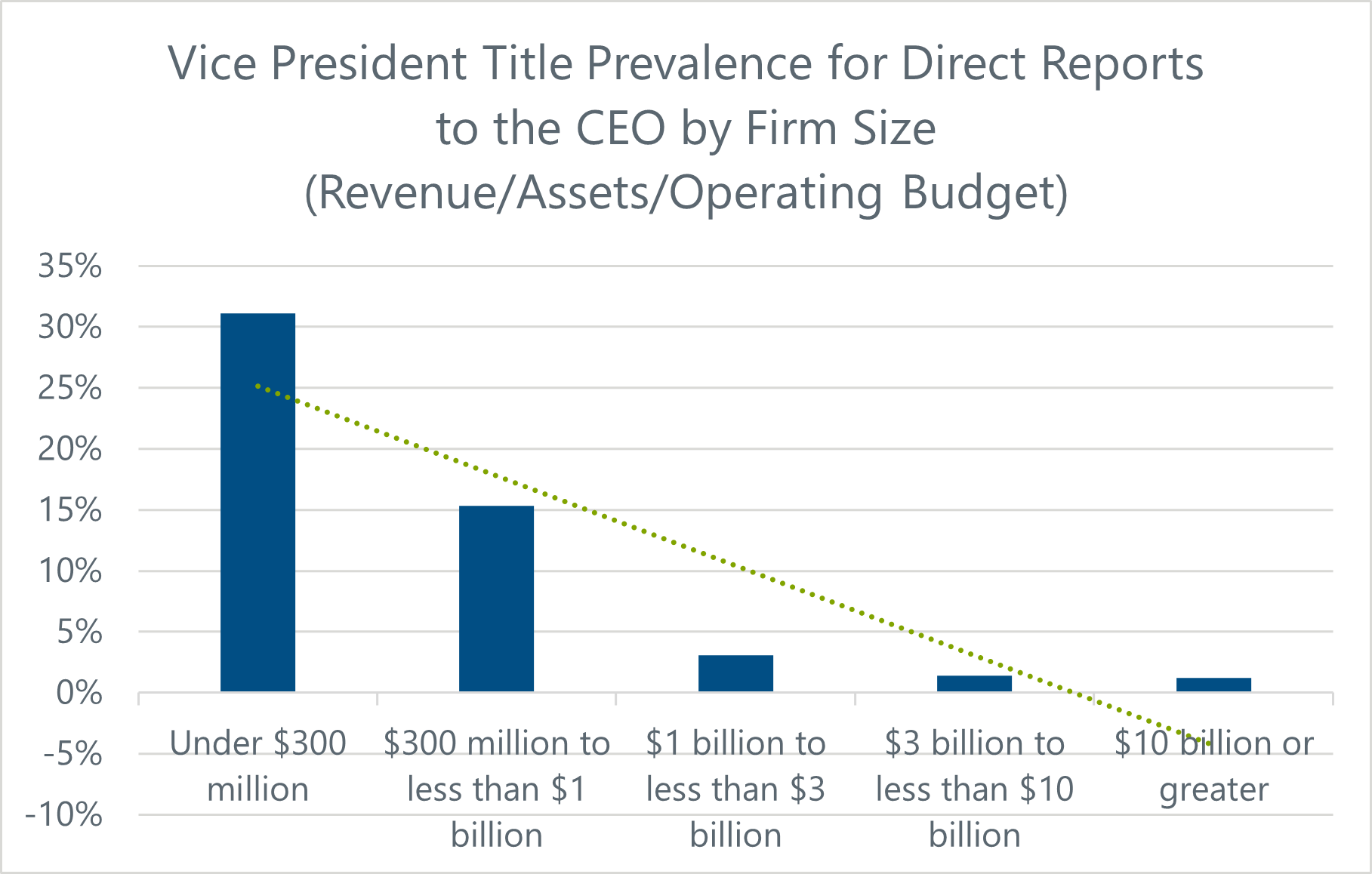
Advisor Blog | May 2024 |
Job Title Trends and Strategies
Current market data showing how companies are using job titles can boost your recruiting and retention strategies.
What does the savvy HR manager need when faced with a dramatically evolving workplace, disruptions to the emergent gig economy, record low unemployment, and a job-seeker’s market? The answer is accurate data that can provide an edge in their recruiting and retention efforts. There are several job titling trends, revealed by fourteen years of research, that may offer helpful guidance.
Titling Uses and Drivers
What are the most important reasons for various job titling practices? Since Pearl Meyer began the Job Titling Practices Survey in 2009, participating organizations have consistently reported that job titles are used to accurately reflect the employee’s role and to convey the organizational hierarchy.
Although this main purpose of titles has not changed, it is not the only way in which they are used. The data show a significant uptick in titles being used to attract prospective employees (up 75% since 2009 and up 34% since 2018) and to retain current staff (up 86% since 2009 and up 38% since 2018).

Job Titling Philosophy—Working Titles
For a majority of participating companies (80%), employees are required to use the job title provided by the firm, or something very similar. The remaining 20% provide employees some autonomy—either a wide latitude or within some limits—to establish their own working titles.
When looking at the percent of companies that give employees some degree of autonomy for establishing their own working titles, the findings vary significantly by industry. Information Technology organizations provide employees the most freedom to determine or influence their title (36%), while the financial industry offers little opportunity for employee involvement in determining their job titles (5%), which is not surprising given the traditionally conservative culture in this sector.

Titling Prevalence—Predominant Executive Titles
Beyond recruiting and retention, titling information is also very important for a baseline understanding of comparable positions. Inaccurate or inflated titles can have the unintended consequence of driving pay levels up or down, which can have a large impact in the executive ranks. The survey report provides information on the most prevalent and second-most prevalent titles for direct reports to the CEO; direct reports to direct reports of the CEO; the third, fourth, and fifth levels below CEO; first-line management; and the highest level technical employees.
In all three editions of the survey, across all participating firms, executive vice president is the most prevalent title for direct reports to the CEO. When looking at the prevalence of the executive vice president title across firm size, the title is more prevalent as company revenue increases. This may be because larger organizations tend to have more top executives and more hierarchical job structures.

Conversely, at smaller organizations the most prevalent reporting title to the CEO is Vice President. Large companies, however, rarely use this tile for direct reports to the CEO, and use of this title sharply declines for organizations with over $1B in revenue.

The Job Titling Practices Survey Report
In this extremely competitive job market, employers must use every tool available to be successful. With the right strategy, job titles can be used as a competitive advantage to attract and retain talent and evaluate market pay levels appropriately.
Pearl Meyer recently published the fourth edition of the Job Titling Practices Survey Report. Based on information from over 400 participating organizations, the report provides a comprehensive look at this often complex subject and includes a range of topics:
- Job Titling Philosophy
- Variability in Job Titling Practices
- Uses/Drivers of Job Titles
- Communication of Promotional Job Title Changes
- Business Card Practices
- Titling Associated with Mergers and Acquisitions
- Predominant Titles
- Titling Practices
- Criteria for Specific Title Usage
If your organization would like to purchase the 2023 Job Titling Practices Survey Report, click here; if you would like additional information, please contact us.
